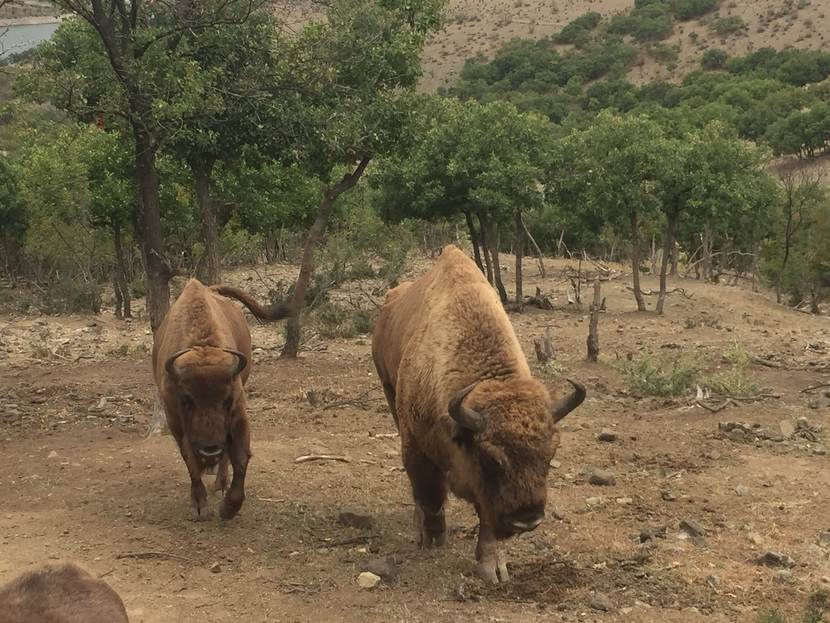Successful Restoration of the Population of the European Bison in the Eastern Rhodopes
Returning the European bison to the Rhodope Mountains is part of the wildlife restoration activities within the "Rewilding Europe” network, part of which is the "Rewilding Rhodopes" project.

The European bison has been dwelling the Eastern Rhodopes for already five years now. The restoration of their population in the area began in November 2013 when the first five animals were brought to the village of Studen Kladenets from Germany.
In spite of the initial difficulties and the loss of some animals, they adapted successfully and in July 2015 for the first time in centuries a European bison was born at the Rhodopes. Over the next three years the parents got two more babies which proved the animals were feeling good at the natural environment of the Rhodopes.
Since November 2017 the number of European bison in the Eastern Rhodopes has grown to seven with two young animals donated by a German zoo.
Тhe increase of the flock brought many emotions an unpredicted situations for the members of the "Rewilding Rhodopes" team. The original plan envisaged gradual extension of the fence in order to gather the animals together. However, it takes an unexpected direction. Surprisingly the young female demonstrates predisposition to mating earlier. It is typical for the bison to reach virility and start mating after 2-3 years of age. This does not remain hidden for Spiro, the elderly male nearby who decides to quickly remove the barriers in order to reach his new love. After several unsuccessful attempts he takes radical measures and literally breaks the fences between them. Thus the two groups start living together earlier than planned and gradually form a social group. Bison live in herds dominated by the oldest and most experienced female.
The European bison are endangered species, one of the symbols of the European nature conservation. Their story is an example of how only within hundred years species can be brought to the brink of extinction and how, as a result of many efforts, they can be restored.
The European bison, as it is known, has extinct from the Bulgarian wildlife during the Middle Ages, and in Europe at the beginning of the 20th century due to hunting and loss of habitats. After extensive selection and program for reintroduction of the animals, their wild population has been restored in the regions of Central and Eastern Europe, mainly in Poland and Belarus. In the sixties of the last century a small herd of bison was reintroduced to the village of Voden in Northeastern Bulgaria.
Returning the European bison to the Rhodope Mountains is part of the wildlife restoration activities within the "Rewilding Europe” network, part of which is the "Rewilding Rhodopes" project.
Source: Novinite.com